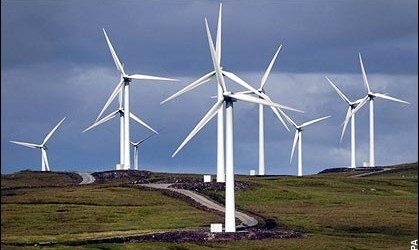Several Australian corporate figures have recently disparaged climate scientists.
First, former banker David Murray questioned the integrity of climate scientists on national TV. Casting such aspersions on scientists follows the precedent set by the tobacco industry, which referred to medical researchers as an “oligopolistic cartel” that “manufactures alleged evidence.”
Attacks on scientists proceed according to the same playbook and regardless of discipline. If there is any novelty in Murray’s slur, it is that until recently he led the Future Fund, a body that is legally tasked with delivering risk-adjusted returns on the Australian Government’s budget surpluses. The adjustment of a risk by denying or ignoring it is arguably not without precedent; see the 2007 financial crisis, for example.
More recently, mining figure Hugh Morgan confronted the issue of risk head-on and declared the world’s climate body, the Intergovernmental Panel on Climate Change, to be “Chicken Littles” whose dire predictions would soon be cast aside, in the same way that the apocalyptic warnings of the Club of Rome from 40 years ago turned out to be false. (Except that when a CSIRO scientist reviewed those 40-year old projections, he found them to be remarkably accurate.)
Much is known in cognitive science about how people judge risks. It is now commonly accepted that those judgments are inherently subjective and subject to cultural biases, such as one’s attitudes towards the free market.
Thus, whereas the medical community lives up to its reputation as Chicken Littles by claiming that tobacco has adverse health effects, other institutions that arise from a different cultural background, such as Morgan’s Institute of Public Affairs (IPA), take a more heroic approach by chastising such “corrupt science” as overly alarmist. The trade-off between free-market fundamentalism and lung cancer is a matter of cultural preferences.
Perhaps then, mining executives are simply Courageous Real Men™ who can handle small problems like climate change — if need be with a bit of nuclear landscaping. Their tough but experienced hands will guide us to a safe future.
Perhaps.
There is, however, one problem, which is that this culture of heroic risk-taking falters at the sight — and the sound! — of wind turbines.
The Australian Environment Foundation (AEF), an organisation closely aligned with the IPA, has been a leader in the fight against the perfidious risk posed by wind turbines.
A recent peer reviewed paper by Professor Simon Chapman and colleagues at the University of Sydney confirmed the impressive success with which the AEF has alerted people to the hazard posed by “wind turbine syndrome”. The paper concludes that health concerns about wind turbines in Australia are primarily limited to those sites that have been visited by organisations with an anti-wind agenda. It found “the dominant opposition model appears to be to foment health anxiety among residents in the planning and construction phases.”
This health anxiety is non-trivial because wind turbine syndrome is a disease more terrifying than smoking, climate change, vaccinations, Communism, and GM foods put together.
The list of symptoms ranges from minor irritations such as the vibration of people’s lips at a distance of 10km from the nearest wind turbine, to more serious issues such as accelerated aging, aggression in cattle, death in goats, aggravated ADHD in children, autism, and behavioral changes in dogs. To date, 216 symptoms have been reported.
The list of symptoms also includes peculiar birth defects in chickens, such as crossed beaks. One might therefore be tempted to dismiss concern about wind turbines as merely another instance of alarmism by “Chicken Little” scientists.
Except that no scientists were involved, because wind turbine syndrome has no presence in the medical literature. The Chicken Littles are anti-wind agitators, many affiliated with the IPA that dismisses the risk from tobacco and climate change.
This presents us with a baffling conundrum. On the one hand, there is a cultural propensity among adherents of the free market to dismiss or deny the risks from climate change, notwithstanding the overwhelming scientific evidence. On the other hand, people steeped in the same culture suffer 216 terrifying symptoms at the sight or sound of a wind turbine, thereby experiencing a risk that is unknown to medical science.
How can those conflicting risk perceptions be reconciled? What is so terrifying about wind turbines? What is so comforting about the many hazards associated with climate change? We cannot be sure as yet, but the answer may well lie in the shadowy world of finance and corporate interests rather than the science of risk management.
Stephan Lewandowsky is Chair of Cognitive Psychology at University of Bristol. He receives funding from the Australian Research Council and the Royal Society
This article was originally published at The Conversation.
Read the original article.









